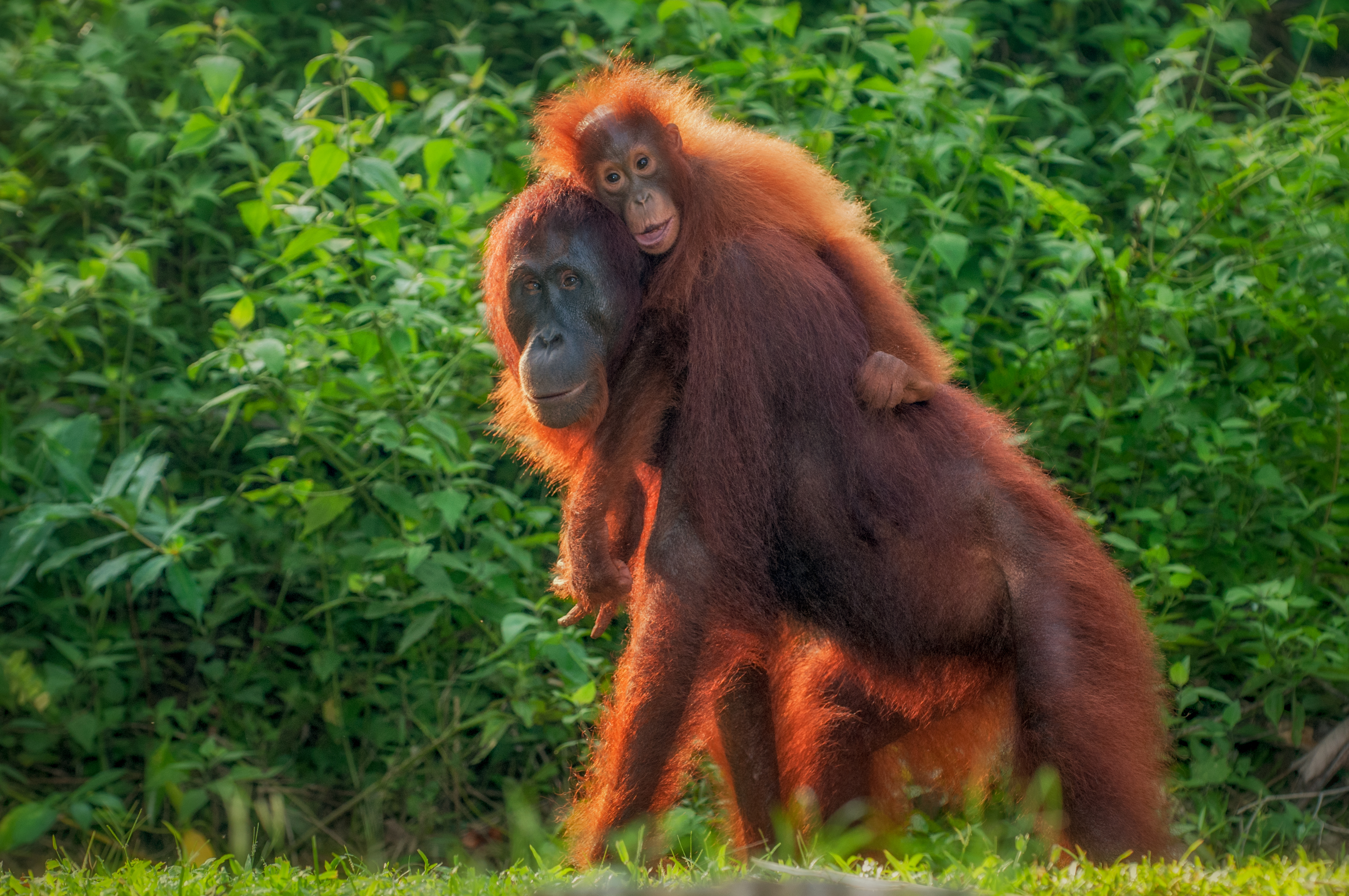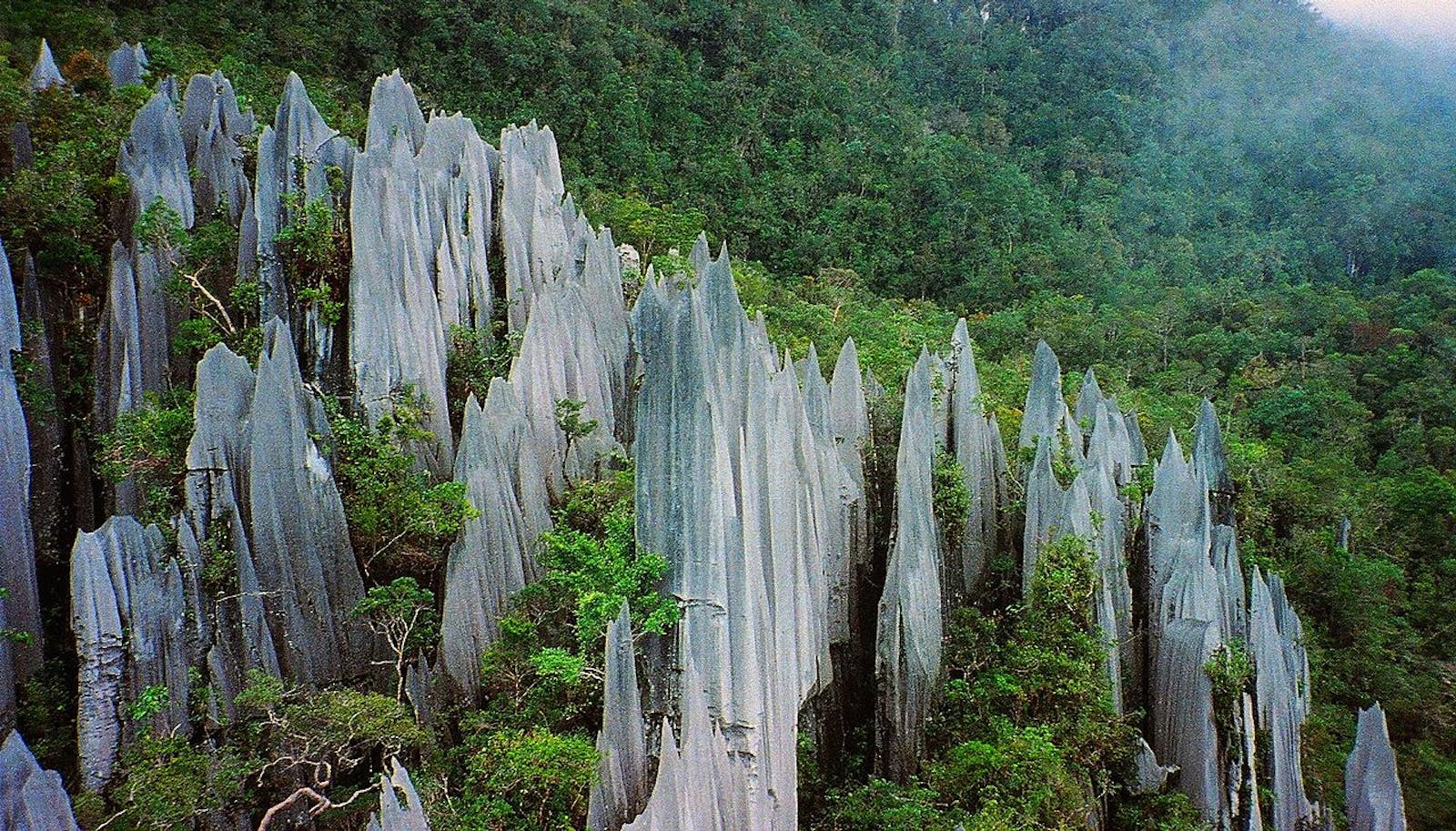Borneo Montane Rainforests
The ecoregion’s land area is provided in units of 1,000 hectares. The conservation target is the Global Safety Net (GSN1) area for the given ecoregion. The protection level indicates the percentage of the GSN goal that is currently protected on a scale of 0-10. N/A means data is not available at this time.
Bioregion: Borneo Tropical Forests & Sundaland Heath Forests (IM16)
Realm: Indomalaya
Ecoregion Size (1000 ha):
11,960
Ecoregion ID:
220
Conservation Target:
98%
Protection Level:
2
States: Indonesia, Malaysia, Brunei
In 1977, Rookmaaker published a map of the approximate boundaries where Sumatran rhinoceros populations—its subspecies also known as the Bornean rhinoceros—could be expected to occur. It included a large area of the Borneo Montane Rain Forests ecoregion in Sabah, Sarawak and Kalimantan. In 2008, conservationists estimated there could be about 50 rhinos in the wild in Sabah.
By 2015, the Minister for Tourism, Culture and Environment stated that the Bornean rhinoceros was extinct in the wild in Sabah, and hope was fading for the species. About a year later, there was a reprieve when two small populations estimated at 15 animals were reported from the Kelian Protected Forest in Kalimantan, an area that had been mined for gold. This sad chronology also shows how little explored the montane rainforests of Borneo are, and how little we still know about the biodiversity of this ecoregion.

The flagship species of the Borneo Montane Rainforests ecoregion is the Bornean orangutan. Image credit: Creative Commons
The ecoregion representing the montane forests along the central spine of Borneo has been described as a montane archipelago in an ocean of lowland dipterocarp forests. The climate ranges from tropical in the lower elevations to alpine in the highest elevations, including the 4,095 m Mount Kinabalu in Sabah. The mountains receive over 3,000 mm of annual rainfall, and the upper montane forests also derive moisture from the clouds. The geology is primarily old volcanic rocks and mélange with continental origins.
The flora has links to both Asian and Australian plant families and is represented by species of Araucariaceae, Clethraceae, Ericaceae, Fagaceae, Lauraceae, Myrtaceae, Podocarpaceae, Symplocaceae, and Theaceae. The Dipterocarpaceae in the lower elevations transition into oak, beech, and chestnut forests at around 1,200 m. Above 1,500 m, the forests again transition into a belt of Ericaceae dominated forests, represented by over 40 species of Rhododendrons, and into alpine vegetation on the highest peaks.
Overall, about 150 species of mammals have been recorded from this ecoregion, with smaller species such as tree shrews, civets, and squirrels dominating the mammal community. But the island’s isolation since the late Pleistocene over 12,000 years ago has resulted in the evolution of several endemic species and subspecies, including larger species such as Bornean orangutan, Sunda clouded leopard, and Asian elephant.
The Bornean bay cat is another endemic species, now considered to be one of the rarest wild cats in the world. Very little is known about the ecology of this cryptic felid. Slightly larger than a house cat, it has a uniform, dark, chestnut red fur with faintly speckled black markings and spots. It was first described in 1874 from a skin and skull collected by Alfred Russel Wallace in 1856, and although a few more specimens were collected after that, it remained unseen from 1928 until it was ‘rediscovered’ in 1992.
Twenty-three species of birds are also endemic to the montane forests, and represent about 73% of the island’s endemic bird fauna.
Almost three-fourths of the ecoregion’s forests are still intact, with about 25% under protection. Kayan Mentarang National Park (13,605 km2) and Betung Kerihun National Park (8,000 km2) in Kalimantan contribute significant protection in the ambitious Heart of Borneo (HoB) transboundary conservation initiative. However, vast commercial logging activities, oil palm plantations, forest fires, and illegal logging remain significant threats. The dire status of the rhinoceros is a stark testimony of the threats to endemic and endangered species.
Thus, the recommended priority conservation actions include: 1) strengthening protected areas management; 2) managing forests outside the protected areas through sustainable land uses and community stewardship to maintain ecological linkages across the HoB; and 3) regulating and zoning areas for plantations and logging concessions.
Citations
1. Rautner, M., Hardiono, M. and Alfred, R.J., 2005. Borneo: Treasure Island at risk. Status of forest, wildlife and related threats on the island of Borneo. WWF Germany publ.
2. Wikramanayake, E, E. Dinerstein, et al. 2002. Terrestrial Ecoregions of the Indo-Pacific: A Conservation Assessment. Island Press.
3. MacKinnon, K., 1996. The ecology of Kalimantan (Vol. 3). Oxford University Press.




